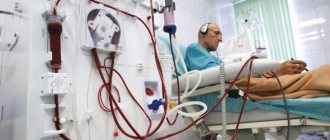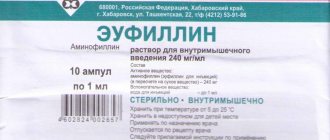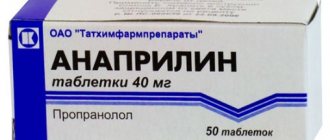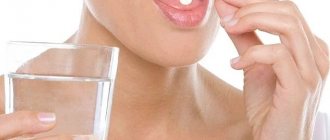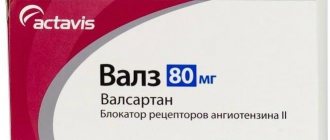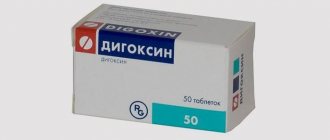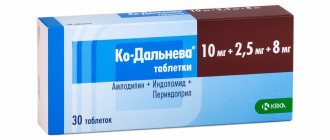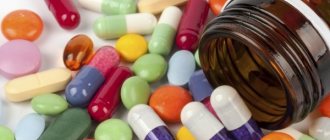Most often, varicose veins begin to appear after 30 years of age, and sometimes earlier - in the presence of hereditary and provoking factors. A drug for the treatment of varicose veins...
Treatment of varicose veins requires a responsible approach. To reduce the risk of blood clots, it is necessary to restore blood circulation in the veins and capillaries, as well as carry out therapy aimed at reducing blood viscosity. To normalize the functioning of venous valves, it is necessary to strengthen the walls of the veins and restore venous tone. Learn more about the treatment of varicose veins...
Flavonoids are natural angioprotective substances. The maximum amount of flavonoids is found in fruits colored red, burgundy and purple, especially in rose hips, hawthorn, grapes, blueberries, cherries, raspberries, blueberries, and strawberries. Preparations containing flavonoids...
Varicose veins can manifest themselves in different ways depending on a person’s lifestyle and individual physical characteristics. Some people simply have swollen legs, while others have a whole range of symptoms. How can varicose veins be treated?
Varicose veins are a pathology of deep and superficial veins, which, as the disease progresses, lose their elasticity and change shape, becoming tortuous and knotty. A remedy for the treatment of varicose veins…
ANGIONORM® is a medicine for the treatment of varicose veins and symptoms of chronic venous insufficiency. Find out more about the drug...
If previously chronic venous insufficiency (CVI) and varicose veins were diseases of old age, today they are becoming more and more “younger”. This is caused by the sedentary “office” lifestyle of modern city dwellers. Sedentary work, poor diet, lack of physical activity are only a small part of the factors that provoke the development of these unpleasant diseases.
How to recognize the disease at an early stage?
As practice shows, most diseases detected at an early stage are easily cured, but not all patients seek help in time. You can recognize the development of a serious illness at an early stage by the following symptoms:
- lower limbs get tired quickly;
- often the legs cramp;
- aches;
- swelling and heaviness;
- discomfort when climbing stairs;
- burning sensation;
- dilated veins visible to the eye;
- spider veins.
All these signs indicate the onset of the development of the disease, so it is important to immediately seek help and start taking medications for the veins and blood vessels of the legs, which will help relieve symptoms and prevent the development of the disease.
Traditional medicine
Vascular pathologies of the legs are not an independent disease. This is one of the signs of a poor state of the body. If in the last century problems with joints and blood vessels worried only older people, now even young people are concerned about them. In women, such lesions on the legs occur after childbirth.
In the early stages, these diseases do not manifest themselves in any way, so it is important to practice prevention and eat only healthy foods, do simple exercises to improve the general condition and improve blood circulation in the vessels of the feet and calves. There are also effective folk methods for cleansing blood vessels at home. Let's describe some of them:
- Strengthening blood vessels with cranberries. You need to take half a kilogram of fresh red beets, cranberries, black radishes and 0.5 liters of alcohol. Grind these products and put them in a three-liter glass jar. Then pour in alcohol, cover with a lid and leave to infuse in a dark and cool room. After 15 days, strain, pour into a clean jar and store in the refrigerator. Drink 30 ml per day half an hour before breakfast.
- Treatment of varicose veins with Kalanchoe leaves. Grind them, put them in a 0.5 liter jar, the leaves should fill it halfway. Pour water and leave in a dark place for 7 days. Once a day you need to shake the jar. Strain the infusion and rub your feet with it overnight (from the feet to the thighs). The course of treatment is 1 month.
- Rejuvenation of limbs with blueberries. Grind the berries. Apply the resulting paste to your feet for 1 hour. Afterwards, rinse with water.
- Cleaning vessels with lemon and garlic. This remedy will not only help cleanse the circulatory system, but will also lower cholesterol levels and relieve headaches. Grind 4 lemons and 4 heads of garlic. Stir and add 2.5 liters of cold boiled water. Leave for 3 days in a jar with a lid. The treatment is long but effective (from September 1 to May 30). Take 100 g in the middle of the day.
It is possible to cure mildly advanced vascular diseases of the legs with folk remedies, but it is advisable to consult with a specialist before doing so. After all, even a minor pathology can have negative consequences, so this must be done correctly and in a timely manner.
One of the main factors in the normal “existence” and functioning of the human body is the excellent condition of the blood vessels, because thanks to them, blood, enriched with oxygen, freely flows to all organs, delivering everything essential for their difficult work.
Pathologies affecting the vessels of the legs
Poor circulation in the legs can be caused by the following diseases:
- phlebeurysm;
- phlebitis;
- thrombophlebitis;
- atherosclerosis of leg vessels;
- thrombosis;
- endarteritis.
All these diseases can provoke serious consequences, so it is better to start therapy as early as possible. After accurately confirming the diagnosis, the doctor will take into account concomitant diseases and prescribe medications for the blood vessels of the legs, which will help quickly and effectively solve the problem.
Recipes for vasodilating folk remedies
Vasodilator folk remedies can easily be converted into medicinal recipes that can help expand the body's blood vessels. So, 7 of the most effective ones.
1. Garlic can help with many troubles. Vessels are no exception. In addition, it is recommended for relieving spasms and cleansing blood vessels in the brain, which we already wrote about in this article: “How to improve cerebral circulation.”
The best garlic medicine in this case is oil. Take a medium-sized head, knead it in a mortar and fill it with one glass of unrefined vegetable oil. Stir well and place in a cool place overnight. In the morning you should take a teaspoon of this oil and lemon juice, mix and take three times a day, but only before meals. The duration of such treatment is 3 months.
2. Hawthorn can become a worthy rival to garlic. They use the fruits from which the decoction is made: 20 g of berries are poured into one glass of boiling water and boiled over low heat for several minutes, then cooled to room temperature and taken 1 tbsp daily before meals. l.
A decoction of hawthorn flowers has the same properties, but the proportions in this case are different - 1 tbsp. l. per glass of water. The cooking method is similar.
3. Herbal teas will also come to your aid. Take 100 g:
- chamomile flowers,
- St. John's wort herbs,
- yarrow,
- immortelle,
- birch buds.
Mix thoroughly and measure out 1 tbsp. l. Pour boiling water (500 ml) and wrap well. The medicine is infused for about 30 minutes.
But that's not all, as it needs to be strained and cooled to body temperature. The fact is that honey (1 tbsp) is added to the drink, which simply does not tolerate high temperatures and, out of fear, loses all its miraculous properties.
Now we divide the resulting healing cocktail into 2 parts, drink one of them immediately, and leave the second for the next day. We drink it in the morning, on an empty stomach, slightly warmed in a water bath (didn’t forget about honey?). The course of treatment is until the mixture is completely used up. It is recommended to carry out such prevention every 3 years.
4. Valerian is not only a good sedative. It can also help blood vessels. For such a remedy we will need valerian rhizomes, which need to be finely chopped and dried. The recipe is simple: take 10 g of roots, pour a glass of hot water and set it to “simmer in the bathhouse”. When the liquid boils, reduce to a minimum and keep for about 30 minutes. Then remove from heat and wrap tightly, after which we let it brew for 2 hours. The decoction is ready! You can take 1 tbsp. l. up to 4 times a day.
Another recipe with “cat grass” will help you in the prevention of atherosclerosis and hypertension, thrombophlebitis, as well as varicose veins. Just to prepare this infusion you will need a spacious thermos. A mixture of dill seeds and ground valerian root is prepared (1 cup and 2 tablespoons, respectively), poured into a thermos and topped up with boiling water to 2 liters. Let it sit for a day, after which 2 glasses (!) of natural honey are added to the warm drink. This sweet medicine should be taken 1 tbsp. l. half an hour before eating.
Adequate blood supply to organs and systems is the key to their normal functioning. However, with age, the elasticity of blood vessels deteriorates, and various types of deposits (cholesterol plaques) appear on the walls. To prevent blockage of the vascular bed, it is necessary not only to use medications, but also to pay attention to diet and the level of physical activity.
Doctors and traditional healers agree on one thing: an abundance of fatty and carbohydrate foods inevitably leads to serious complications, for example, a stroke or heart attack. However, there are different ways to prevent such pathologies, while only an integrated approach can improve blood rheology and restore elasticity to blood vessels.
5. Potato peel is an affordable remedy that can help many organs of the human body. Its decoction is also suitable for dilating blood vessels. It is not difficult to prepare: 4-5 root vegetables must be thoroughly washed, peeled and filled with 1/2 liter of boiling water. Keep on low heat for 15 minutes, remove and strain. You need to drink 125 ml of the decoction before meals.
6. Hazel leaves and bark are considered very useful for improving the condition of blood vessels and the heart. Take 1 tbsp. l. dry raw materials, placed in a glass vessel, filled with a glass of boiling water and closed with a lid. After an hour or two, the product is ready. You need to take a couple of tablespoons several times a day.
7. Baikal skullcap is widely known in its homeland as a universal remedy for combating problems of the cardiovascular system. The roots of the plant are most popular among people. To prepare the decoction, the roots must be crushed to a powder, take 1 tbsp. l. and brew in 3 cups of boiling water.
After this, place in a water bath and watch carefully so that the water does not boil. After an hour, the broth can be removed and strained. The recommended dosage is a tablespoon every 3 hours.
Traditional medicine recipes (including vasodilators) have repeatedly proven their effectiveness, but first you need to be sure of the correct diagnosis of the disease. This means you still can’t do without going to the clinic, because you need a comprehensive and professional examination. Otherwise, it may turn out the same way as in the good old saying: “if you treat, you cripple.” Think about it. And decide for yourself.
Conservative therapy for leg pain
How the therapy will proceed and what medications the doctor will recommend for the treatment of blood vessels in the legs depends on the specific disease and stage of development. There are several groups of drugs that are often used by doctors to treat problems with the lower extremities. These include:
- angioprotectors;
- myotropic antispasmodics;
- alpha-blockers;
- venotonics;
- thrombolytics;
- anticoagulants.
Each patient who comes in with a problem is given a diagnosis and a comprehensive treatment is selected that will not only eliminate the symptoms, but also the cause of the disease.
Today, pharmacists offer a wide selection of drugs that help effectively cope with leg diseases. Doctors often prefer time-tested medications for blood clots in the vessels of the legs, but new modern ones are no less effective. Technologies do not stand still, thanks to which tools appear that help even in advanced cases. All remedies are divided into groups, and only the doctor decides what exactly to recommend to a particular patient. Which medicine for the blood vessels of the legs should I choose?
Angioprotectors
They help normalize blood flow, strengthen the walls of blood vessels and increase the tone of the venous walls. Drugs in this group are divided into natural and synthetic. Herbal tablets are considered more gentle on the body; they have fewer contraindications and unwanted effects.
Doctors have recently opted for drugs such as Detralex and Pentoxifylline, reviews of which from most patients are only positive.
Alpha blockers
This group includes “Phentolamine”, “Nicergoline”, which block receptors located on the vascular machines. Therefore, they prevent adrenaline from binding to adrenergic receptors. This connection causes a sharp narrowing of the lumen of the vessel walls and venous stenosis. In addition to these medications, to strengthen the blood vessels of the legs, it is recommended to take calcium antagonists, for example, Nifedipine or Verapamil, which prevent the development of stenosis, help remove blood viscosity and normalize blood flow. All these drugs belong to one broad group - vasolidators.
Venotonics
This is an auxiliary group of drugs that are used to treat vascular diseases of the lower extremities. They help strengthen weak vessel walls and normalize blood circulation. The anatomy of the vein wall is designed in such a way that its inner muscle layer is very weak, as a result of which they are easily stretched. Venotonics help strengthen the muscle structure of the wall and increase tone. Such drugs include Venoruton and Venolife.
Treatment of varicose veins of the legs
Therapy for varicose veins in the legs should be comprehensive. Most often, doctors use medications for the blood vessels of the legs that help normalize the tone of the veins, increase circulation and outflow of lymphoid fluid. To treat varicose veins, doctors focus on the following groups of medications:
- Venotonic. They help strengthen the veins in the legs, prevent the formation of blood clots and thin the blood. The following drugs showed good results: Phlebodia, Detralex, Escusan.
- Medicines to clean blood vessels in the legs and prevent blood clots. Doctors prefer tablets containing aspirin, such as Cardiomagnyl.
- Non-steroidal anti-inflammatory drugs are prescribed to relieve inflammation and are often recommended to patients for varicose veins. This group includes Indomethacin and Diclofenac.
- If swelling is observed with varicose veins, then the doctor may additionally recommend taking Venosmin.
All of the above medications for veins and blood vessels in the legs should be prescribed only by a doctor who will not only conduct an examination, but also find out about all concomitant diseases and monitor the therapy.
Which medicine is best for veins?
Is it possible to effectively fight varicose veins, popularly called simply “varicose veins”? This topic is especially relevant for young women who attach great importance to the beauty and health of their legs. Varicose veins and CVI provoke frequent cramps and swelling of the legs, nightly fatigue and pain in the lower extremities. Timely treatment can prevent the development of varicose veins and the occurrence of complications - such as venous thrombosis - which are much more difficult to cope with than the initial symptoms of varicose veins. It is equally important not only to start treatment in a timely manner, when even minor symptoms appear, but also to choose the right approach to it, which allows you to influence all disorders of the venous circulatory system that cause varicose veins.
On a note
Relentless statistics claim: in our country, approximately 30 million people suffer from CVI pathologies[1], while from 35 to 60% of patients are people of working age[2].
Often, potential patients do not attach importance to the first symptoms-harbingers of the disease, since in the initial stages they can be mildly expressed. What are these symptoms?
- Swelling of the ankles, feet, and lower legs indicate congestion in the blood vessels, due to which blood plasma enters the tissues through the walls of small capillaries. Swelling is often accompanied by a feeling of fullness and heaviness in the legs. The symptom most often appears in the evening.
- Vascular “webs” or “stars” - telangiectasias.
- Paresthesia. The patient periodically feels numbness, burning and tingling in the legs - the so-called goosebumps. This usually occurs after a long and significant static load on the lower limbs.
- Night cramps are another harbinger of the disease. They can also occur due to stagnation of blood in the veins of the legs. The body needs such involuntary and very painful muscle contraction in order to push blood from bottom to top through the vessels.
In addition, the development of varicose veins is indicated by a constant feeling of tired legs. If treatment for varicose veins is not started in the initial stages, then later large veins begin to protrude from the patient, forming nodes and twisted cords under the surface of the skin. Trophic disorders accompanying varicose veins and CVI lead to dryness and hyperpigmentation of the skin of the legs, thinning and constant itching. Complications of the disease can include trophic ulcers, trophic dermatitis, eczema, acute thrombophlebitis and pulmonary embolism.
Therapy for venous diseases is aimed at eliminating the causes of the disease, alleviating symptoms and correcting complications in the later stages of the disease.
Compression therapy is based on the action of special therapeutic knitwear or bandaging with elastic bandages. They tightly and evenly fit the patient’s thigh and lower leg, narrowing the lumens of the superficial veins of the leg, which eases the load on the walls of the veins, reduces the likelihood of their stretching and thinning, and eliminates the risk of blood clots. In addition, compression products alleviate the patient’s physical condition, relieving bursting pain and a constant feeling of heaviness in the legs.
Surgical methods are used in the later stages of the disease. Thus, phlebectomy involves the removal of dilated superficial veins in situations where all other methods of therapy have proven ineffective. Sclerotherapy is similar to phlebectomy, but in this case the vein is removed not with the help of surgical instruments, but by injecting special drugs. After such a drug is injected into a vein, it glues its walls and stops blood flow in the vein.
However, the basis for the treatment and prevention of varicose veins is still drug therapy. The combination of drug therapy with non-drug methods (lifestyle correction, gymnastics, diet) and concomitant therapy (compression hosiery) allows for maximum impact on both the cause of the development of varicose veins and the reduction of its symptomatic manifestations (pain, heaviness, swelling, cramps in the legs) .
The leading role in modern drug treatment and prevention of varicose veins is played by systemic venotonics (venotonics), taken orally. The mechanism of their action is aimed at correcting disturbances in the functioning of the venous circulatory system, which are the cause of the development of varicose veins, namely:
- disturbances in venous tone (the operation of vascular valves, which normally prevent the reverse flow of blood in the legs);
- thinning and weakening of the walls of blood vessels (under blood pressure in the veins);
- blood thickening (increasing its viscosity and tendency to form blood clots).
The therapeutic effect of the use of venotonics in tablets is systemic in nature - that is, it helps to improve the health of blood vessels throughout the body, affecting the venous system as a whole. Due to this, systemic venotonics, as a rule, have a more pronounced and long-lasting effect on the symptoms of varicose veins - in contrast, for example, to external venotonics in the form of gels and ointments, which act for a short time and only at the site of application.
Systemic venotonics are a fairly large group of drugs. As a rule, most of them are obtained by processing medicinal plant raw materials, because the most active angioprotectors are precisely the components of plant origin: flavonoids (diosmin, hesperidin, avicularin, quercetin, rutin and others), horse chestnut extract (containing escin), rose hip extract (containing vitamin C) and others. Based on the number of active angioprotectors in the composition, all systemic venotonics can be divided into single preparations (for example, containing only flavonoids, only escin or only rutin) and combined ones, consisting of several active angioprotectors - for example, flavonoids enhanced with escin and vitamin C. The advantage of combined venotonics is that they are able to provide the entire complex of actions necessary for the treatment of varicose veins “in one tablet”: venotonic, angioprotective (strengthening the walls of veins and capillaries) and antiplatelet (reducing blood viscosity).
This is interesting
Active study of bioflavonoids began in the late 90s of the last century. The impetus for this was the “French paradox”. The fact is that a large-scale international study showed that among the French, mortality from atherosclerosis is significantly lower than among representatives of other European nations. This was due to their consumption of red wine, which contains large amounts of various types of flavonoids. Scientists have proven that flavonoids not only prevent the development of blood clots, but also have a venotonic effect, which means they can be effectively used in the treatment of varicose veins[3].
Some other drugs can also be used as an auxiliary (concomitant) therapy for varicose veins.
Non-steroidal anti-inflammatory drugs: based on acetylsalicylic acid, diclofenac, as well as the Ginkgo Biloba plant. They are prescribed for the treatment of concomitant inflammatory processes or for symptomatic treatment aimed at eliminating pain symptoms in the legs due to varicose veins.
External venotonic agents. These include ointments, gels, and creams for external use, which help alleviate the symptoms of varicose veins: fatigue, heaviness, swelling of the legs. The most popular external venotonics are conventional gels and ointments based on heparin, troxerutin, etc.
Further in the article we will consider systemic venotonic agents for the treatment of varicose veins in the form of tablets.
"Detralex": how to take?
This drug has long been used to treat varicose veins of the lower extremities. It helps increase the tone and elasticity of the vein walls, and also removes congestion. Take it twice a day, two tablets at a time. The course depends on the severity of the disease. If the disease was detected at the initial stage, then it will be enough to take medicine for the joints of the legs for only 2-3 weeks. If blood clots were detected during the examination, then the duration of treatment should be at least six months. But this issue is discussed with the attending physician.
This drug is contraindicated for use by children and adolescents under 18 years of age, as well as by pregnant women and breastfeeding mothers. Detralex is easily tolerated by the body, but in some cases allergic reactions, dizziness and digestive disorders may occur.
Potato peels and hazel will restore blood vessels
Just like hawthorn decoction, potato decoction can help dilate blood vessels and clear them of congestion. To prepare it, you need to boil the clean skins of 4-5 potatoes in half a liter of boiling water for 15 minutes. Filter the finished product and drink half a glass half an hour before meals.
In the treatment of blood arteries, various vasodilating folk remedies can be effectively used, among which the leaves and bark of common hazel have proven themselves well. Dried crushed raw materials in the amount of 1 tbsp. Place the spoons in a glass container, brew a glass of boiling water and let it brew for about 60 minutes. Take the product orally in 2-3 doses throughout the day, 1-2 tbsp. spoons.
"Aspirin" for varicose veins
For a long time, for problems with veins in the legs, doctors have advised patients to take Aspirin, but only in combination with other drugs. If you strictly follow the recommended dosage, the medicine for blood clots in the vessels of the legs will help. It should be taken every 4 hours, 1 tablet, and you should not drink more than 8 pills per day. Take it strictly after meals, since the active ingredient of the medicine has a detrimental effect on the gastric mucosa. An overdose should not be allowed, otherwise it can cause hemorrhage. The drug is contraindicated during pregnancy and breastfeeding.
Lifestyle and nutrition
To keep your blood vessels healthy, you need to eat right and lead an active lifestyle. Nutrition should be balanced, that is, include all the elements necessary for the body in optimal proportions. You need to eat regularly, in small portions and not overeat in the evening. It is recommended to avoid fatty and fried foods, foods containing bad cholesterol, and alcoholic beverages. It is important to eat more greens, vegetables and fruits.
For effective treatment, timely diagnosis of vascular diseases of the legs is important.
Physical inactivity is one of the main enemies of blood vessels. To improve the condition of veins and arteries and blood circulation in general, you need to be mobile: walk more, take evening walks, swim, exercise, etc. It is undesirable to stay in one position for a long time. If you have to sit or stand at work, you need to change the position of your legs, move them, tense your muscles, and rotate your feet. At the same time, you need to avoid putting heavy loads on your legs. When traveling on long flights or traveling in a car, you must wear compression tights or stockings.
Bad habits must be given up first. Nothing damages the blood vessels of the legs more than smoking.
If these rules are not followed, treatment with medications or folk remedies will not give a positive result.
"Diclofenac"
This drug is available in several forms: tablets, injections and ointments. For problems with leg veins, it is always used as part of complex therapy. Diclofenac helps relieve pain and inflammation, and also prevents blood clots. The tablets are taken after meals, 1 pill twice a day, and the ointment is applied to the legs.
This medicine has many contraindications, so before taking it, it is better to consult with your doctor. The drug is not suitable for long-term therapy.
Hawthorn will restore blood vessels
Vasodilating folk remedies, which also have the property of clearing the arteries of foreign debris, will help restore the normal metabolic process. An effective drug that helps dilate blood vessels and relieve spasms is considered to be a decoction of hawthorn. To prepare the healing remedy, 20 g of fruit should be boiled in 200-250 ml of boiling water for 5-7 minutes.
You need to drink hawthorn decoction 20-25 minutes before meals, take a tablespoon throughout the day in 3 doses. Instead of fruits, you can use the flowers of the plant at the rate of 1 tbsp. a spoonful of crushed raw materials per glass of water.
Atherosclerosis of leg vessels: medications
Atherosclerosis is an abnormal metabolism in the entire body or an individual organ. The disease affects blood vessels and is characterized by the deposition of special substances on the inner lining of the arteries. Due to this compaction, the lumen in the vessels decreases, and if no measures are taken, then their blockage and disruption of tissue nutrition may occur in the future.
Dystrophic changes develop as a result of malnutrition. The main factors contributing to the development of atherosclerosis of the lower extremities are considered to be smoking and diabetes mellitus. If a diagnosis has already been made, then there is no escape from it, just get treatment and take medications prescribed by the doctor to dilate the blood vessels in the legs.
All drugs that are used to treat atherosclerosis are usually divided into several main groups:
- Statins. The main substances in their composition have the ability to maintain an optimal balance between healthy and harmful fats that are found in the blood. Their main task is to reduce cholesterol levels. All these drugs are aimed at blocking enzymes that promote the production of lipid compounds. These products will not remove existing deposits from the vascular walls, but will stop their growth and prevent blockage.
- Fibrates are prescribed to lower blood cholesterol levels and only to those patients for whom statins are contraindicated. They reduce the synthesis of triglycerides, increase the breakdown of cholesterol and inhibit its effect.
- ACE inhibitors control blood pressure. They do not get rid of atherosclerosis, but they save you from various kinds of complications, which are expressed in the form of a stroke or heart attack.
- Beta blockers are recommended for patients with coronary artery disease, which is accompanied by an increase in blood pressure when intermittent claudication is present.
- Antiplatelet agents help thin the blood, preventing clots from clinging to plaques on the vascular walls, thereby further reducing the lumen.
For problems with blood vessels in the legs, you need to take medications exactly as prescribed by your doctor. If you take these drugs incorrectly, you may experience low blood pressure, as a result of which blood will not pass through the narrowed section of the vein, and the tissues will not receive the oxygen they need.
We treat blood vessels with herbs
To dilate the blood vessels of the brain and cleanse them, the use of a herbal complex of birch buds, chamomile flowers, yarrow, St. John's wort, and immortelle is effective. These components, taken 100 grams each, should be mixed. To prepare the healing remedy, take 1 tbsp. spoon of the resulting raw material, brew it with 0.5 liters of boiling water and let it brew for half an hour. Then you need to cool, filter, and, if desired, sweeten with honey. Divide the resulting volume in half. Drink one half immediately, the second half warm in the morning on an empty stomach. The duration of treatment is until all the prepared mixture is used up. As a preventive measure, it is recommended to clean the vessels in this way once every 3-4 years.
Thrombophlebitis and phlebitis of the lower extremities
Thrombophlebitis is a disease that affects the veins of the legs, in which a blood clot forms in the lumen of the vessels, triggered by an inflammatory process on the venous wall. Experts call this disease inflammation and thrombosis of superficial veins. If the pathology affects the deep veins, then in this case a diagnosis of “phlebothrombosis” or “vascular thrombosis” is made. If inflammation is recorded, but there is no blood clot, then it is phlebitis.
Most often, the pathology affects the veins of the lower extremities; it cannot be cured on its own; only an integrated approach will give good results.
Endarteritis of the legs
This is a serious disease that constantly progresses in the arteries of the lower extremities and leads to the fact that the lumen in them narrows significantly, blood flow is disrupted and gangrene develops. It is the vessels of the legs that are most often susceptible to this disease.
Symptoms of the disease manifest themselves to a greater extent in middle-aged and older men who abuse smoking. Treatment of the disease is effective only if the pathology is detected at an early stage, but when the tissues are deeply affected and gangrene develops, then only amputation is indicated; no medicine for the blood vessels of the legs will help the patient.
The right diet will keep you healthy
Vasodilator folk remedies have repeatedly proven their effectiveness in the treatment of various diseases, but without a correct diagnosis, home therapy can be harmful. Therefore, consultation with a medical specialist on maintaining your own health is mandatory.
If you want to help your blood vessels restore elasticity and structure, you should control your diet by eliminating alcohol. There is a popular belief that 50 grams of cognac daily helps dilate blood vessels. This is true, but the effect of alcohol is short-term. In the future, the vessels will begin to narrow and become more clogged, while the body will no longer be able to cope without daily doses of alcohol.
Medicines for diabetics
Patients with diabetes often experience foot problems. In such patients, the vessels of not only the lower extremities, but also the whole body suffer. It is very difficult to choose a medicine for the blood vessels of the legs in diabetes, because this disease is of the first and second types. In such patients, edema is often observed, because metabolic processes in the body are disrupted. To remove swelling, doctors recommend taking Papaverine, Nifedipine or Enalapril.
To eliminate pain, it is allowed to use:
- thioctic acid derivatives;
- antidepressants;
- B vitamins;
- local anesthetics;
- anticonvulsants.
To heal trophic defects, antimicrobial drugs such as Betadine, Curiosin, Solcoseryl or Levomekol are used.
The attending physician must select a medicine for the blood vessels of the legs for patients with diabetes or for patients who do not have this diagnosis. Self-medication in such cases can cause irreparable harm. Even after the medicine has been prescribed by a specialist, you still need to personally study the instructions; perhaps, when talking with the doctor, the patient forgot to mention his other diseases, and he should not take this medicine. Any undesirable manifestations during therapy must be reported to the doctor.
How are these medications useful?
Not only statins for atherosclerosis are an effective treatment option. Positive dynamics in treatment are achieved by including nicotinic acid drugs in the therapeutic regimen. There is also the name vitamin PP or B3 - the antipellagritic agent niacin. Nicotinic acid increases the level of “good cholesterol” and reduces the concentration of triglycerides. Dilates small blood vessels, improves microcirculation, improves fibrinolytic activity of blood by enhancing anticoagulant properties.
According to research conducted at the National Heart, Lung and Blood Institute, experts concluded that taking niacin reduces the number of heart attacks as a complication than when treating atherosclerosis with statins such as Atorvastatin, Simvastatin and Fluvastatin. Preparations with fortified acid have the best effect in cases of atherosclerotic process in the arteries of the legs - endarteritis, accompanied by intermittent claudication and “showcase” syndrome.


